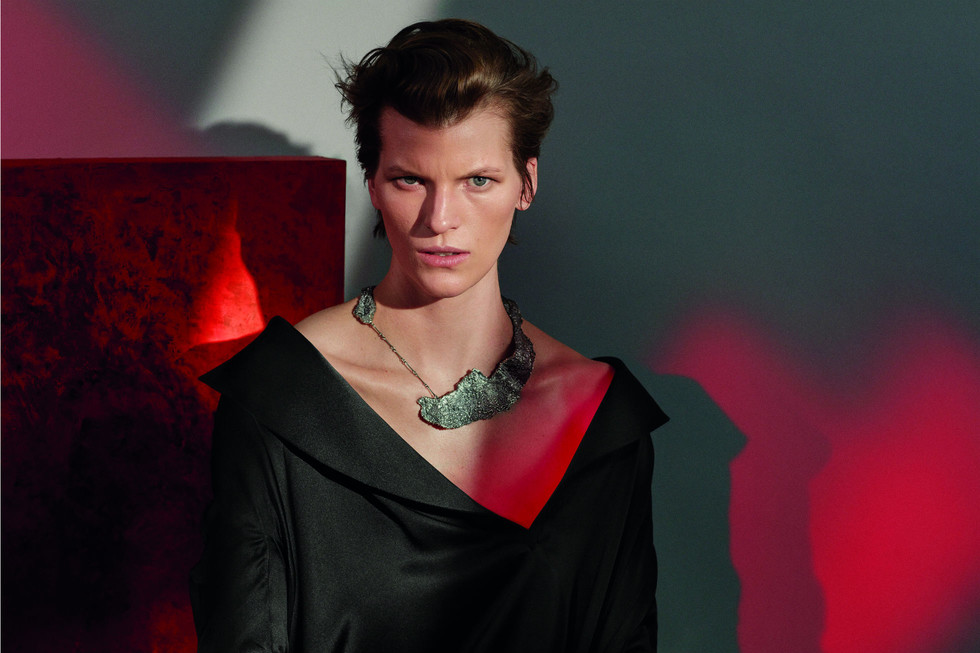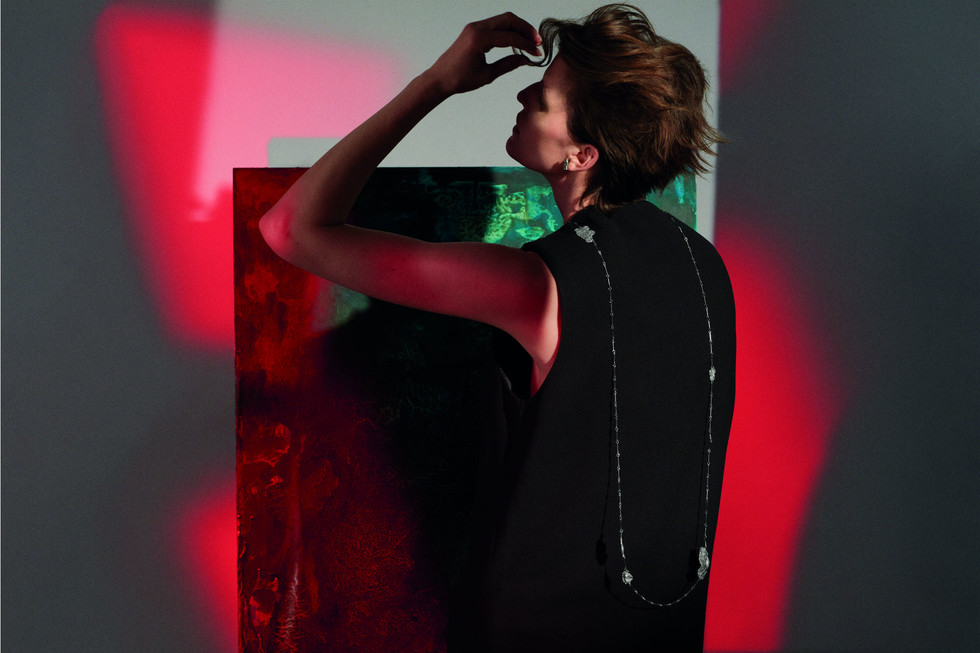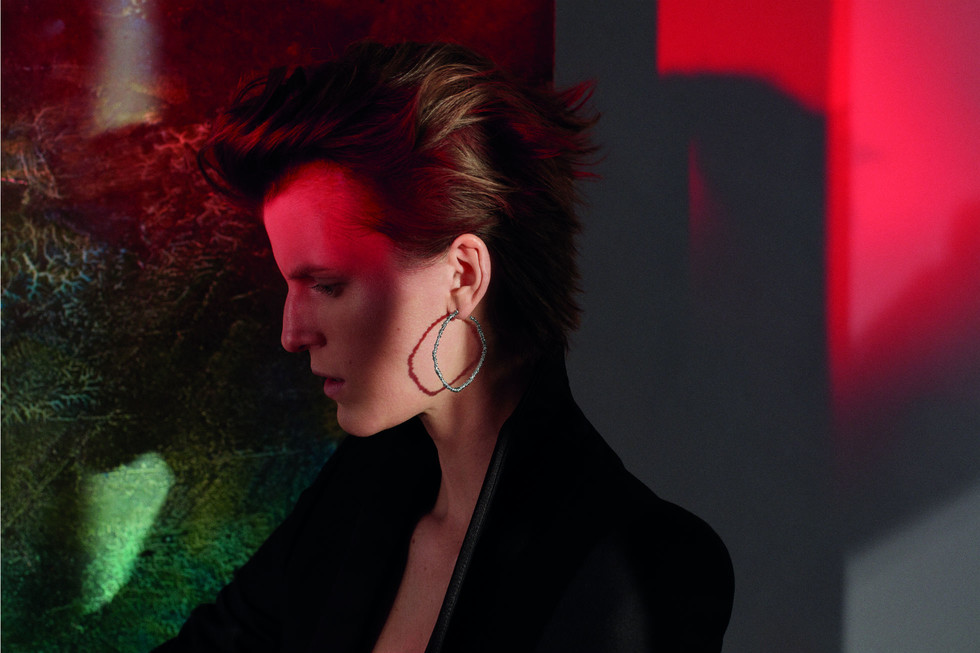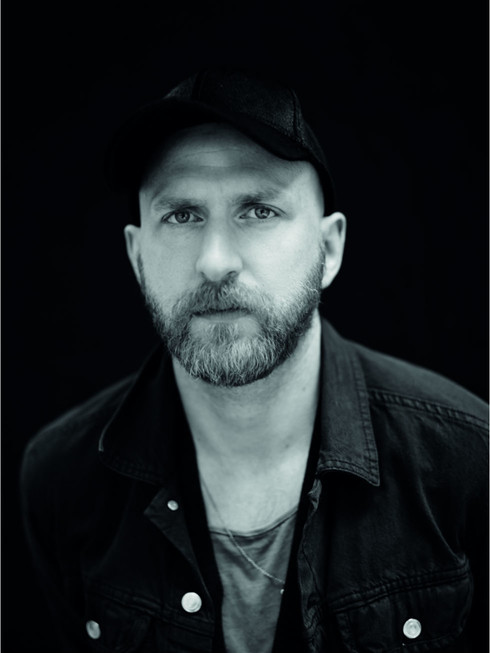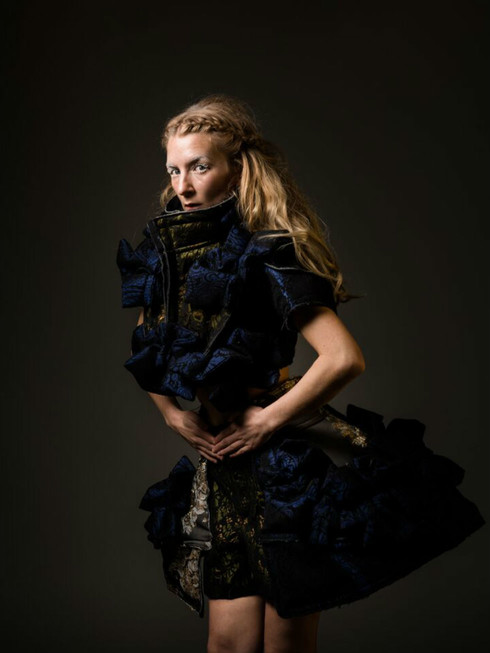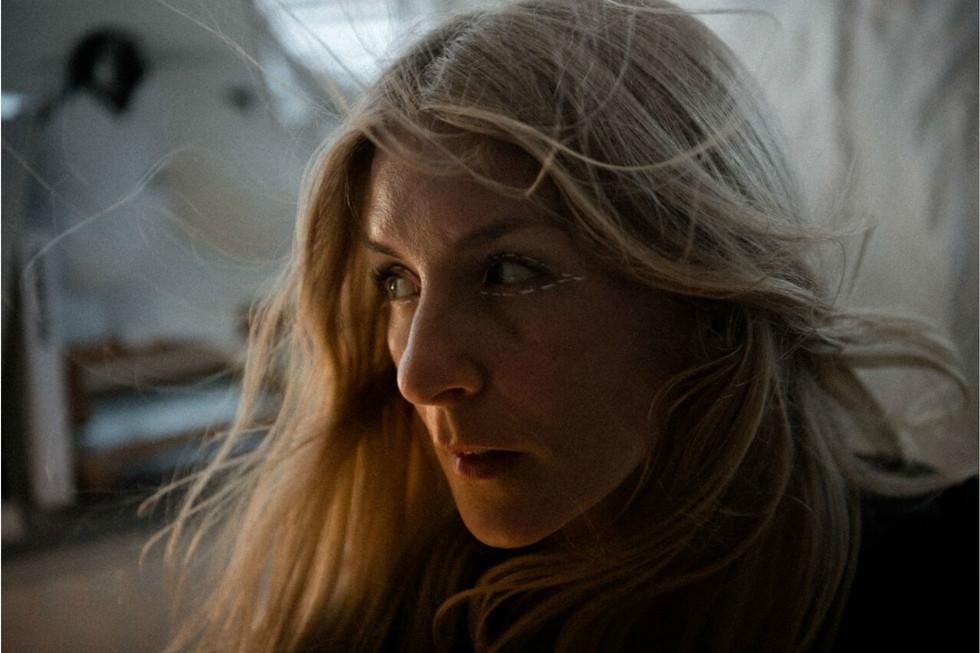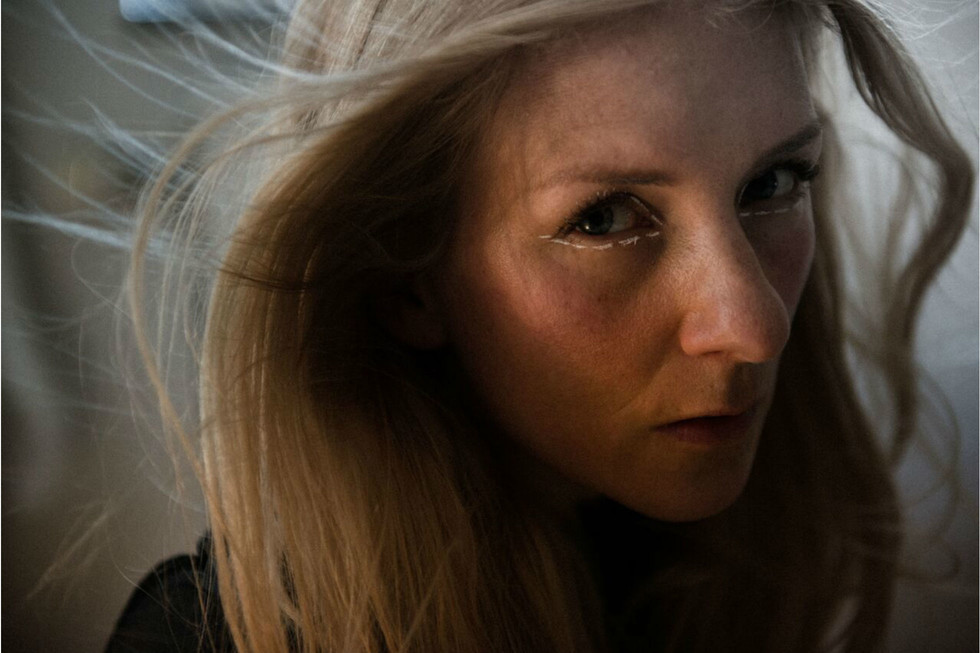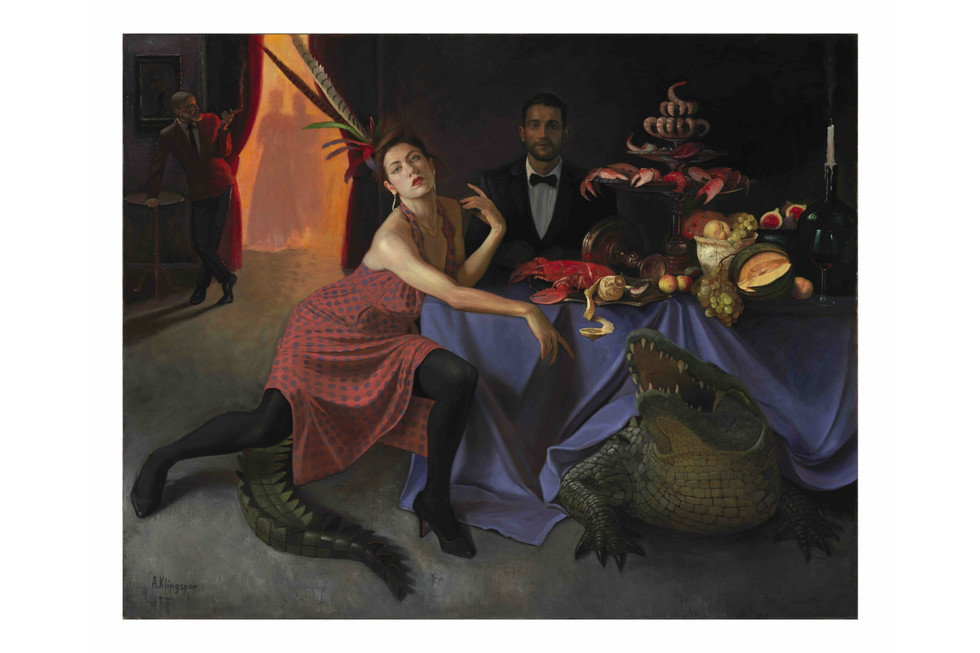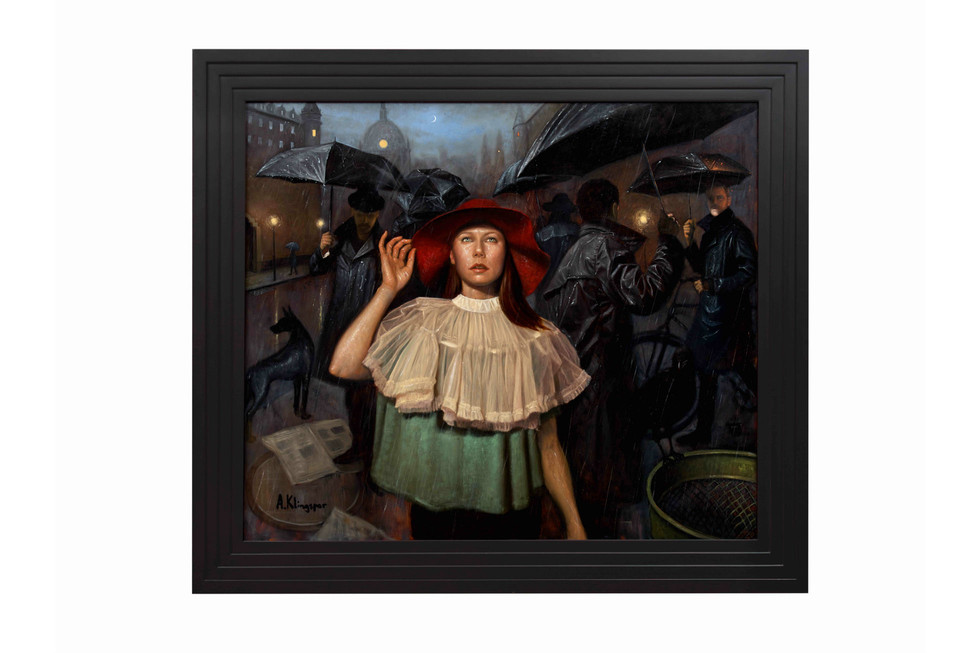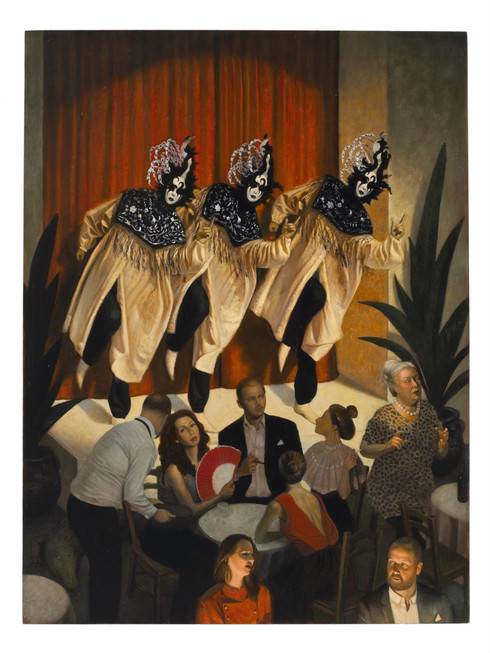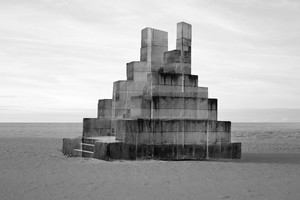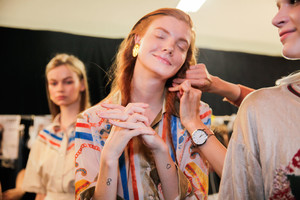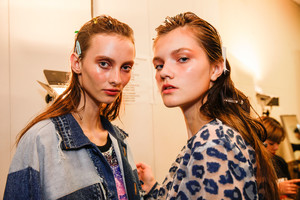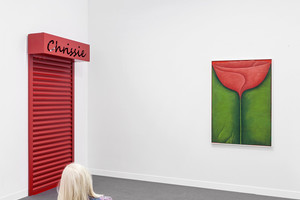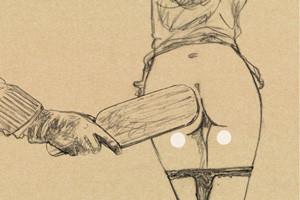With his heart in Stockholm and soul in New York, Alexander Klingspor once started his artistic path in the Stockholm night speaking its laconic language of isolation to him. Later, inspired by the American Realism and having the authenticity of Swedish heritage in his backbone, the artist set off on his journey to America, looking for his own artistic voice and identity. After travelling around the artistic jungle and learning how to behold, how to feel, how to participate and how to depict his own analyses on the canvas, Alexander Klingspor is back, united under the same roof with his idols such as Ernst Josephson and Anders Zorn at Prince Eugen’s Waldermarsudde. His exhibition “Traveller”, which started with a burlesque vernissage, staged in the Great Gatsby-mood, spiced with the René Magritte-inspired and thought-provoking Butterfly Face Man installation dressed by Swedish New York-based designer Stephen Ferber, appeared to the beholder as an artistic diary.
The professional path of the artist could clearly be seen in his artworks filled with anxiety, longing, happiness, sarcasm, duality, sexuality, searching, isolation, victory, humour, success and fail. With all what it means to be a human. The central theme of the exhibition is the stage where our life is taking place in its often constructed reality. Thus, we are merely players with our exits and entrances. Nevertheless, Alexander Klingspor gives us an opportunity to realise and to feel it through the realism of his art filled with surrealistic metaphors and provoking allegories.
I met the artist a few days after his show at the museum in order to talk about everything from art to Levi’s jeans and fashion collaborations. Looking for inspiration in his meetings with other people, Alexander himself is a great source of inspiration with his analytical approach to art and creative ability to view the philosophy of life.
When you started painting in the 1990’s, American Realism inspired you and the greatest inspiration was Edward Hopper. What I have found interesting is the creative struggle you both went through. Hopper had years of struggle to define his own style before receiving a public recognition, while you had troubles to find your own voice. Have you ever thought about that similarity? How do you think Hopper helped you to outline your artistic path? Edward Hopper begun as an illustrator, as well as did I and I think that is the similarity. Apart from that we are very different, I think in many ways. However, I could relate to Hopper at a very early stage. I liked his beautiful compositions and also the way he reflected upon his time and his era. It kind of resonated with the Stockholm night that I found myself in after I came back from Kansas City, Missouri and started working as an illustrator. And in the Stockholm night, when I was searching for what I wanted to say as an artist, Edward Hopper’s imagery echoed back. His sense of isolation, whether it would be his own isolation towards other people in his time or if it is the isolation he experienced in the modern day of his time between other people. I think I cannot answer what kind of isolation he experienced but for me, I experienced isolation as an artist, painting figuratively in time where I did not know that many other artists in Sweden.
Edward Hopper was one of the front figures of the Ashcan School (“The Eighth”) and together with the other seven members was called “the apostles of ugliness” for depicting a kind of uncensored reality. It reminds me a bit of the Russian movement called “Peredvizhniki” (The Wanderers) by being a step forward with their art. What do you think about that? It is funny but I never related to Hopper as a member of the Ashcan School because he seems to be so different from George Bellows for instance. George Bellows depicted very messy New York at that time with all those boxing matches and people living in slam-like areas very tough lives many times. Very much an inspiration. I think, George Bellows to me just looks like he lived in such an exciting and dirty time, where life was buzzling around him. It seems like Edward Hopper lived in extreme exile from social interaction and therefore, I think I could relate to Hopper more than Bellows, for instance.
You take a certain reality from the upper classes and bring it into a kind of “apostles of ugliness”-mood in a different and very intelligent way, creating an interplay with gluttony and consumerism. Thanks, what goes on around the dinner table when things are financially all right and then you have those nice clothes, it becomes easily vulgar when you take things for granted and you start consuming very mindlessly. And when everything is presented to you in a way that you are supposed to forget to be thankful, it is a slippery slope.
What have you taken with you from your time with Mark English that helps you even today? Mark English taught me a lot of things. He was illustrator when I met him but he was also shifting over to working towards galleries. He is an old cowboy, so he uses very few words and he said it very clearly, “When you are doing illustration, you are solving somebody else’s problems. When you are doing art, you are solving your own problems.” It was as clear as I could get, basically. And he also told me once… I came over to him I saw him in Sarasota, Florida just before I was going to New York to… with the head in my hand knocking on gallery doors asking if I could show my work, which is usually a complete waste of time but I was young and naïve and I was going to do it. And Mark English was down in Florida because his son was arranging a workshop there. So, I showed him my work and he said, “You are getting somewhere. These paintings have a mood and paintings need to have this kind of energy, a mood to them.” And I held on to those words.
In the beginning stages Mark showed me very much, such as various ways of techniques of painting and also composition. He is a genius in composing his images and I compare him almost to some form of Zen Master when he paints. I have never seen anybody being so productive, yet so calm when he paints. He paints his landscapes that are simplified with geometric shapes. And he is very productive, yet he does not seem exhausted. It is very interesting.
So, Mark English taught me also a sort of time discipline, as all the illustrators have to keep the deadlines. When you know how to keep deadlines, you can work very easily with painting for exhibitions and that is very helpful. Thus, the most important thing Mark English did for you is that he believed in you, isn't it? Oh, yes. I remember when I was done in Kansas City and John English, Mark’s son, drove me to I think the airport or something and he said, “Look, you have the gift and you just get it cultivated.” And I took it with me. It meant a lot.
City seems to be a significant part of your subconscious artistic mind. Are you a flâneur, strolling around, observing and sharing “the gastronomy of the eye” with your art audience or a participator of the scenes you depict in your artworks? It is not complete voyeurism, it is of course a participation. But I feel very at ease in the environment that is kind of crazy, where people are very eccentric because it gives so much and I do not have to anything really in the sense of to contribute to the mood if people themselves are as artworks and works of art. It is so inspiring to be around. So I definitely love the energy of various cities and understanding of how it works. And I think when you first move to a city or if you just visit a city, you definitely a voyeur.
You cannot really participate, you are not allowed to enter. And then you have to work actively to get into groups.You have said that you are “obsessed with a curiosity of what it means to be human and the various colourful ways people in a melting pot like NYC express themselves”. What would you say about differences in style between NYC and Stockholm? We can take two subject matters, such as clothing and lifestyle. In general, I think that to me the city of Stockholm whispers its secrets and you have to really listen. You have to walk around. It is many times of the year and many times of the hour as it is very empty. People are hibernating in the winter time. So you get a lot of time for yourself. And the city whispers its history and it whispers its secrets to you. Anywhere you turn in Stockholm, at least in the inner city, it is like a new painting emerges with its beautiful gateways and doorways and architecture and so on.
When I moved to New York, it was a completely different feeling. That city screams at you, “Look at me! Look at me!” So you just have to pick and choose what you want to see. It is also very unsentimental, it is non-sentimental. It just tears down its own history in order to make profit in a way that city like Stockholm would never do. Therefore, I see also in lifestyle there is much less of a safety net in New York City. People are much more aggressive and protective of themselves in a way of making sure that their own well-being is insured, whereas here we have a safety net and I do feel that if I get sick or something happens to me, the system backs me up somehow.
When it comes to clothing, I think Sweden is very fashionable many times in the urban areas and there are a lot of fashion makers are in the New York City. So it is kind of the same. In many ways Sweden can be very avant-garde, when it comes to life style and fashion, something that New Yorkers and Americans look to. I had some people who came from New York for the show and they all love of course this quality of life.
New York has always been diversified with different cultures and they also expressed themselves differently. And that I think is the strength of the NYC with all these cultures living together and you also get different variations. The fact that you can express yourself the way you dress and so on, more or less how you want and it is the general feeling that you are allowed and you should do this. While in Stockholm it is more homogenous society and you have to not stand out so much. And I think also that is why a lot of Swedes really like place like the NYC, because it is so diverse. The New Yorkers may like Sweden because it is so functional.
The burlesque and “vaudeville-inspired” scenes eternalizing the image of The Box in Manhattan remind a lot of the scenes described in “Great Gatsby” and also the scene of Satan’s Ball in Mikhail Bulgakov’s “The Master and Margarita” and this impression is strengthened by you mentioning abundance, gluttony and consumerism. Do you think your own figure in your paintings could be considered as impersonation of the young and mysterious figure of Jay Gatsby or the mysterious green-eyed stranger in black called Woland? I love Satan’s Ball in “The Master and Margarita”. I think it is fantastic, it is a visual feast and as a painter I would love to depict it and at the same time I would dread it because it is such a masterpiece and I would not be able to live up to it. The book is fantastic. Definitely, there are certain characters that are been portrayed as devils or this kind of very extreme dandies. Mostly, I think it is a kind of mindlessness that is portrayed in my paintings in certain of the characters. They can be greedy, they can be hungry for food, and power, and wealth, and sexuality. Many times also they have a restlessness to them, the quick fixes of the stimulation of the cabaret. This is of course a restlessness within me and if you botanize too long, to the spectrum of humanity or a decadence and a party scene, it will not satisfy you anymore. As you see in my later paintings, I think there is a more peaceful way of life that is more preferable in the end, even though this is exciting. I would not want to not have lived it.
The show is called “Traveller” and it is because life is a journey and you do these dives. Life takes you to all those crazy places and you can get stuck at certain places and then it is good to linger for a while and sometimes it is not so good. So, in a way I think, change is always a victory and positive change is a victory, definitely. Whether or not it relates to the character of Great Gatsby, I am not so sure.
The club scenes filled with opulence, eroticism and decadence bring out the reality of that environment by means of surrealism noir, what I think, makes the emotional effect of your artworks strong and substantial. How would you describe the role of your artworks in the hyperreality we live in today? Social, political or maybe philosophical? By hyperreality I mean that artificial reality consisted of social media, reality shows and other types of counterfeited reality. I think the stage has always amazed me, as there is something very positive to be said about the stage and the illusion of beauty. It has been going on since we have been able to construct a theatre stage. Even the old operas or something, it takes people away into another dimension and we create this illusion of the real world but it is our man-made world. And I think we as creatures with great imagination are depending on this to survive reality. This is what makes us stand out. We have great imagination, as anything we can imagine, we can do, from walking on the moon to looking at bacteria in the microscope. We imagine that this is possible and we find our ways of making it happen. So, when it comes to creating our own reality, this is where it gets really interesting and perhaps scary that the hyperreality today goes into a virtual world and it creates another stage. There is a saying by some Zen Master, I think, but I am calling him Alan Watts, saying that “Ultimate reality is beyond all concepts.” This is very interesting to me, because if you can name it, if you can define it, it is not ultimate reality. It goes beyond words and, I think, as you will see in some of my pieces, the stage is crumbling and the wallpaper is coming down. This necessity to create this illusion of beauty all of a sudden crumbles, has something to do with the hyperreality that perhaps the more you try to create it, the easier it will crumble. And you try so desperately to keep it. Yes, exactly! In the world where we want to cover up with beauty, something else might take place.
What inspires you as an artist and what might kill your inspiration? What inspires me as an artist first and foremost is other art, the inexhaustible amount of visual art that has been created throughout our history. To me anyone from Titian up to Edward Hopper and even later artists leaving today are inspirations. Then it is, of course, people I meet and the environments I am in. If I am in New York City, I am inspired by that place and those people I meet there.
I would say environment and people I meet, who lack or rather are not using their imagination, who do not feel happy within themselves in the sense of their starve for creativity, could kill my inspiration. Thus, it is important for me to be around people who are creative and who inspire me. And that does not necessarily need to be just other artists as it is very much scientists and entrepreneurs of various kinds; all walks of life are very interesting to talk to. And other art forms and other disciplines such as the Midnight’s Children project, which I did together with writer Salman Rushdie and violinist-composer Ittai Shapira. They really fuel my imagination in a way that visual art cannot. It is another art form, another discipline. So, if you find the bridges there, you will find so much information. So many images come to me, when I read Salman Rushdie’s works and I see so much when I listen to Ittai Shapira’s music.
Does fashion inspire you in your art? If yes, could you give an example? Do you consider your art to be fashion? Yes, definitely. And I have even collaborated with a fashion magazine to create three paintings. They are hanging here, “The Trilogy”, “The Self” and “The Other” about the woman who is seeing herself with somebody. They were published in VS magazine New York in collaboration with Cartier, who provided jewellery and also the model, Bianca Brandolini. I was looking at that time for ways of art to be seeing more in media and I found it was an interesting experiment. I was totally free to do whatever I wanted, what is kind of a must, because otherwise it becomes too much of an illustration and it won’t work. However, fashion is an art for me itself. Beautifully made clothes are definitely inspiring.
There is also a collaboration between me and Stephen Ferber, who is a Swedish designer operating in America. Stephen has dressed the Butterfly Face Man – the doll which is part of the installation at my exhibition here. When you make an installation all of a sudden of your paintings, you really need a craft of the tailor in order to live up to the images in the paintings. This is another example of collaborating with fashion. Do you follow any fashion trends? I would not say I have followed any. Whenever I see something that is nice and of course I can be inspired by that. But living in the NYC, I walk down the street, where there is a lot of fashion going on and I get to see it. My focus is mainly on my art. So I do look into fashion, whenever I need to.
What do you think of the Blade-Runner-fashion of today with its dystopian aesthetics? Isn’t that a bit like kind of a back side of your paintings, a hidden message? I think fashion echoes pretty much how the parts of the population feel. And maybe there is a dystopic world view by many now. This is always being there, I think, and in the past as well.
Did you have a pair of Gul & Blå jeans when you were young or were you more of the Levi’s generation? I think I had a pair of Gul & Blå but I was more of the Levi’s generation.
We have previously mentioned the city as a part of your artistic soul, but now I would like to ask you about the integral part of it – dandy. What is dandy for you? Do you consider yourself to be one? Do you think there is a big difference between a dandy from NYC and one from Stockholm? Yes, I think there is a difference but it also depends on what you mean by a dandy. I usually do not use this word that often. But if you go with the English word “dandy”, which means kind of jolly, happy and elegant, then, yes, my characters are definitely this kind of dandies many times or they are dressing up as one. Behind the stage they are probably not as powerful and elegant as they want to portray themselves. We are now coming back to the stage again with the illusion of that around the dinner table, where everything for this moment is very nice and elegant and then, behind the scenes, it may not be. However, I do not see myself as a dandy, because when I paint, when I am painting for shows, I cannot wear clothes like this. I stand in paint-covered jeans and a t-shirt, feeling more like some form of crafts. It is not as glamorous as the dinner suits.
In Stockholm, there are different part of the city, where you see more dandies, while in New York many times you can see quite extreme dandies. In Stockholm it is more moderate. It also has to do with the character of the city, New York is always much more extreme and you would be able to see retro dandies or outrageous dandies. Meanwhile, in Stockholm it is more controlled.
I associate your painting “Man in Thoughts I” with Nils Dardel’s artwork “Dying Dandy”, as I could feel the imminence of death in both. Have you thought about it while painting it? Well, I have not been directly inspired by his work but it is about an iconic image in Swedish art and I think it has, subconsciously, affected me very much. The colours are interesting and similar. When I was looking at Rubens’ “The Tiger Hunt”, I think I grew up with this image and it kind of intruded my mind. I think, that is how we operate. Now, the imminence of death is definitely in my image “Man in Thoughts I” and it is the rider in the background and he is always there. The fact is that Nils Dardel and me are both Swedish and we share that kind of death anxiety, a heritage.
You mentioned Rubens and his painting with tigers. What do animals symbolize in you paintings? Symbolism in the artistry is always super interesting and very powerful, I think. I have played a lot with that. Of course, a tiger or a crocodile are very powerful animals with a lot of danger. For me it becomes interesting to put a crocodile under an elegant dinner table, where it is about almost to bite somebody’s hand off. It may just be a symbol of the conversation which is going on between the people at the dinner table. I also have the symbolism of fish, for instance, which has been very interesting and very important in Christianity. To play with that in my paintings, I find it very interesting that this symbol, being so important for our civilization and Europe, has now been pulled out of the ocean. It has an interesting paradox to it.
You have kind of anticipated my next question. I just wanted to ask you about the symbol of fish in your art, thinking of Max Beckmann and his “Journey on the Fish” (1933). In Beckmann’s works fish symbolizes phallus, fertility and animal nature. I find that aquatic animal to look so weird on plate on land, just like a boiled lobster looks very beautiful but with strange. And boiled lobster has an excel skeleton – it is hard on the outside and soft in the inside and it can relate to some of the characters in my paintings as well. It can also be something very erotic about fish, like in one of my last paintings where a fisherman is slapping his fish on the table, almost like a phallic symbol. Thus, there is a Freudian level to it too, that I am more or less aware of, but I think sexuality is something that is in everything we do and everywhere in nature; everything is about reproduction, so it becomes a kind of interesting layer as well. When I did my “Fish Studies”, I was more looking at Flemish painters than Max Beckmann, as many of them depicted fish in various ways such as dinner scenes etc. I think, their way of painting has been very inspiring.
The interaction with still life always brings existential questions, unless you completely numb. I had a pig head in my big freezer at one point. I took it out to study it and I had to defrost it using a hair blow dryer to get the frost off. Once it started to thaw and juices started to run, things start to move, the ears started sinking a little bit and eyes started getting a certain kind of wetness to them, I realised that is something that had been alive. I think it is important if you depict it and there the painting has an advantage of the photography, because you are forced to stay in it. You cannot just take a photo and leave but you have to stay and really get to know the death of it. It also brings a certain energy to the painting.
Which Swedish Artists are you inspired by? Many of the artists here at Waldemarsudde are my heroes if not all of them, Ernst Josephson, Anders Zorn, Carl Larsson, Richard Bergh and so on. They are all here at this museum and that is why I feel so excited to exhibit here. What about August Strindberg’s artworks? Absolutely, I can definitely like his work and I love the mood he was looking for, especially in Stockholm.
Does anything in particular from the Swedish heritage, part of which you also are, inspire you the most? Definitely, Swedish angst is a certain kind of angst. We are very correct and we keep what we promise, we show up on time. These values I learned that I really had when I lived in New York. I think that correctness stands from the Swedish Lutheran, where you have to earn your way somehow. Then I also think, that the Swedish aesthetic, sense of beauty and the light from this place is very interesting and it is in my backbone. The long dark nights, the artificial light of Stockholm, for instance but also the Scandinavian lights with their sunsets and summertime.
In your artworks, I think I could see references to Ingmar Bergman’s “The Seventh Seal”. Does he inspire you? I do not really refer to him but I have seen the movie and I love that death scene. And I think it is such a great portrayal of death. Definitely, I love that kind of character. When I was young and saw Pieter Bruegel’s “The Triumph of Death” at the Museo del Prado in Madrid, it affected me deeply and I was terrified as a child.
Could you tell us about religion/religious scenes in your art? Christianity, which is a part of European history, has a difficult view on sexuality and has been very forbidding and very punishing towards a side of human nature that has been accepted in another cultures. Therefore, I put Adam and Eve running, where Adam chasing Eve naked in the background of one of my paintings that we discussed earlier, “Man in Thoughts I”. You cannot escape the fact that it has affected you and therefore I am trying to study and analyse how it has affected me and how I can incorporate it into my art.
Your favourite place in NYC respectively Stockholm and why? In New York it is the Metropolitan Museum of Art and the Hispanic Society due to their incredible art collections. In Stockholm I prefer Djurgården for its nature and Prince Eugen’s Waldemarsudde for its environment and art collection.
What advice would you give to creative people today, who are looking for their purpose in life? I will use the words I was once told, “You have to put yourself in a situation where you have no other option but to succeed.”


